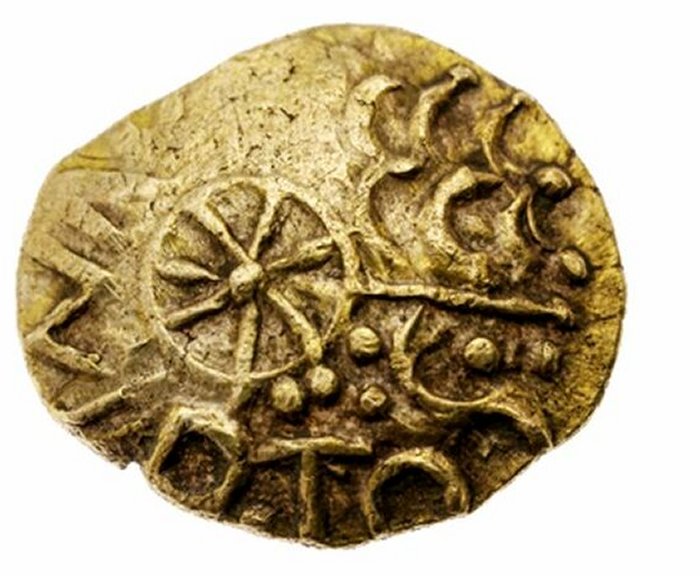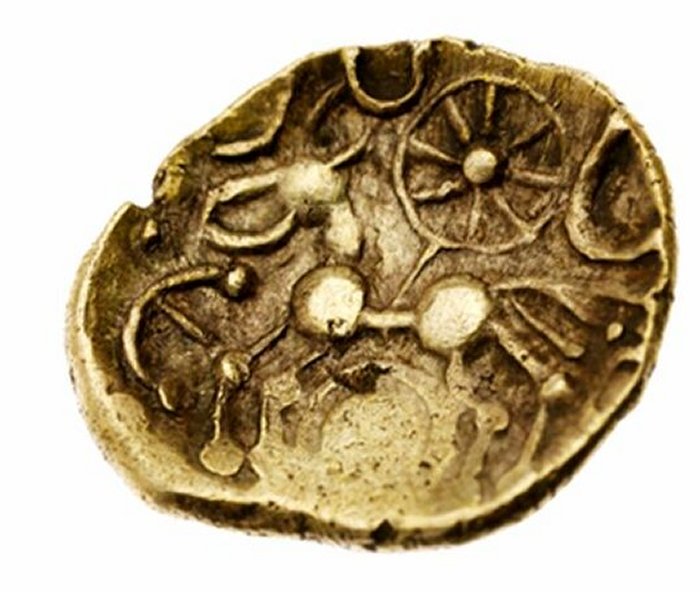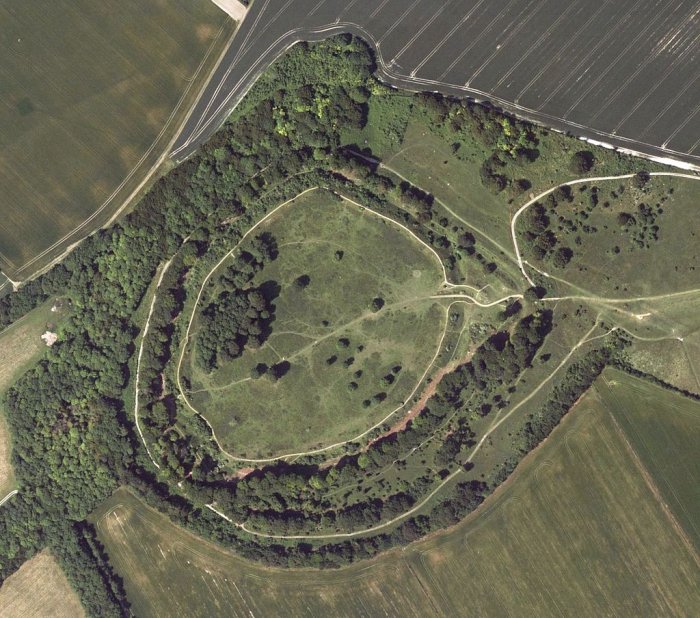Jan Bartek – AncientPages.com – A metal detectorist has made an extraordinary discovery that re-writes the history of ancient Britain.
In March this year, after receiving permission from the owner, Lewis Fudge was investigating a field in the Test Valley, Hampshire, UK. Fudge discovered an ancient gold coin that is smaller than a fingernail and stamped with the name ‘Esunertos.’

A coin stamped with the name of a forgotten Iron Age ruler was found in Hampshire. Credit: Spinks
Experts have examined the coin, and there is no doubt this is a remarkable find!
The coin “was struck sometime between 50BC and 30BC, shortly after Julius Caesar’s first raid on Britain in 55 BC. Caesar arrived with a small force off the coast of Kent but was forced to turn back after struggling to land and rough seas wrecking their boats.
Leading Iron Age experts who studied the coin deduced it had been struck by a pre-eminent male figure dubbed Iisvnirtos, an alternative spelling of Esunertos that translates from the Celtic language spoken at the time as Mighty as the God Esos.
One theory is that he ruled as king from nearby Danebury Hill fort,” the Telegraph reports.
“It is one of the outstanding discoveries of recent decades in Celtic numismatics,” Dr. John Sills of the Celtic Coin Index at the Ashmolean Museum said.

Credit: Spinks
The coin was expected to fetch around £4,000, but bidding at auctioneers Spink pushed the price up to £20,400, including premium, beating the world record for a similar type of coin, a “Medusa” quarter stater that sold for £10,800.

Aerial image of Danebury Hill Fort. Credit: Hampshire Hub and University of Southampton – OGL v1.0
The coin is “one of the earliest instances of an inscription to be found on a native British coin, and a previously unknown “ruler” and undoubted contemporary of Caesar’s client King Commios, and of reddish-gold fabric scientifically confirmed to be of a consistent metallurgical standard, on an irregular but full-weight flan, a really good very fine, EXCESSIVELY RARE and of great significance towards our understanding of the dissemination of classical language amongst tribal elites and dispossessed Gallic settlers in the century before the successful Claudian invasion of Britannia,” Spink announced.
“I am over the moon, if it were not for people in the auction room I would have jumped around.
The collectors I spoke to are gobsmacked. I’m so glad I did not take them up on their private offers before the auction. To think my find has generated its own Wikipedia page, is incredible,” Fudge said.

Construction worker Lewis Fudge found the coin in this Hampshire field. Credit: Spinks
“This fabulous piece of prehistoric artwork completes the mental image we have when we think of Iron Age Britain – the war horse and chariot.
But it also surprises us with the appearance of classical languages like Latin.
This is the reason I come to work; to document the discoveries of national importance and share that knowledge directly with museums and amongst academics, collectors and the public at large.
On a personal note, this find is particularly vindicating for me.
I focused my university degree on the Roman invasion of Britain through the lens of Britain’s first coinage.
To now add a critically important contemporary witness to those seismic events in the birth of our island’s story is electrifying.
Despite the coin’s diminutive size, the name of its conceiver – Esunertos – now truly echoes down the ages.
See also: More Archaeology News
Esunertos was once forgotten, but now his name looms large in the historic record,” Gregory Edmund, Iron Age Coin Specialist at auctioneers Spink who led the team of experts in the recording of this new find, said.
The stunning ancient coin has opened a new chapter in the history of Britain and perhaps more finds can provide additional information about the reign of King Esunertos.
Written by Jan Bartek – AncientPages.com Staff Writer





